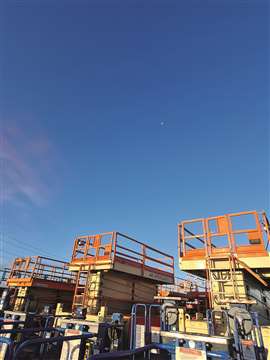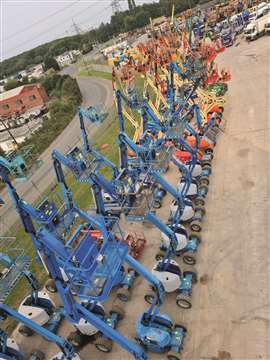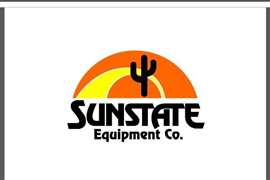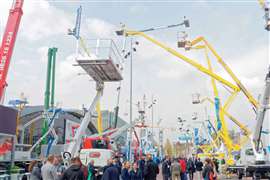Read this article in Français Deutsch Italiano Português Español
How to adapt in a fast-changing used equipment market
11 February 2025
The forces of the global market economy significantly impact the disposal and sale of used access equipment, with OEMs, distributors and end-users utilising various sales channels. Scott McCall, Lifting and Access Sales Manager at Euro Auctions, discusses the challenges.
We are all familiar with the traditional routes for disposing of used or redundant machines: direct sales, online marketplaces, equipment dealers, local buyers, exporting, auctions, or consignment sales of entire fleets. However, as the global lifting and access market expands with previously emerging markets becoming mainstream and a plethora of new manufacturers in every sector, disposal routes are changing at a significant pace.
 Scott McCall, Lifting & Access Sales Manager, Euro Auctions. (Image: EuroAuctions).
Scott McCall, Lifting & Access Sales Manager, Euro Auctions. (Image: EuroAuctions).
Factors such as international competition, regulatory measures like US and EU tariffs, the shift to electric equipment, and broader economic conditions all influence this landscape. Stakeholders must closely monitor these dynamics to navigate the market effectively and ensure optimal disposal of their equipment.
It is not just at disposal that these changes need to be considered, I’m increasingly involved in discussions with businesses when they are considering new fleet investment. Not only around market trends and historical sales data, of which we have considerable detail, but now regarding the hot topic for 2025 - understanding the impact of US and EU tariffs on Chinese manufactured equipment.
The key here is to understand the origin of the equipment as many western brands manufacture product in China. Tariff free equipment will command a better return on the used market, with an unrestricted wider buyer base. However, if the initial purchase price is low enough this may mitigate any back-end reduction.
New Technologies
I’m often asked about the value of diesel machines, which are increasingly being replaced by electric alternatives. Despite this transition, the relatively low volume of electric rough terrain machines has currently allowed diesel equipment to retain and, in some cases, increase their value in specific markets. As technology evolves, the dynamics of the used equipment market will continue to shift, impacting how first users dispose of their machines.
More pertinent to today’s market would be slab scissor lifts, which were traditionally hydraulic-drive systems with wet batteries. In recent years, DC and AC drives have become more prevalent, offering improved efficiency and greater user control. Additionally, wet batteries have been replaced by AGM or lithium alternatives, reducing maintenance costs and downtime.
Businesses owning older hydraulic-drive machines with wet batteries may find their typical disposal channels less receptive to such equipment. Auctions provide a viable alternative, offering a global reach and attracting a diverse buyer base, including contractors, rental businesses, and dealers. This global exposure can help move machines that may no longer appeal to traditional disposal customers.
Specialist equipment
 Scissors ready for sale. (Image: EuroAuctions).
Scissors ready for sale. (Image: EuroAuctions).
Another current trend involves equipment once considered specialist becoming mainstream. For example, ten years ago, boom lifts over 85 feet were specialist machines. Today, it’s common to see 100ft, 125ft, and even 150ft machines commonplace in most fleets.
This shift, coupled with high reach booms now being available from Chinese manufacturers like XCMG and Zoomlion, has created a more competitive landscape. Machines once being unique are now more challenging to sell independently. As these are high value items planning for disposal in advance is critical, partnering with a global auction house like Euro Auctions ensures equipment is presented to a wider audience, achieving better results and moving aged equipment quickly.
When is the best time to sell?
This question often arises, and Euro Auctions’ extensive data helps customers make informed decisions. The influx of new manufacturers in both access and earthmoving equipment markets has reshaped buyer preferences. Sellers must consider what buyers prioritise, such as fresher equipment with lower maintenance costs. Revisiting funding strategies at the outset may prove beneficial, especially when factoring in rising costs for parts, engineering, and downtime.
The emergence of new brands and models has provided markets that would traditionally take used equipment with a low-cost new product. Whilst their preference may be for an established brand, the choice becomes more difficult the older the used equipment is. Taking a three-year-old Genie versus a new Chinese platform would be an easier decision than say a seven-year-old Genie. With seven years being a very common fleet retention policy in the MEWP market, it is clear this needs review. Those taking the steps to replace their fleets earlier are seeing not only the financial benefit, but also the operational and reputational upsides too.
With a shortage of skilled engineers and not enough people coming through, the highly competitive rental sector is seeing the impact of downtime, lost revenue and customer dissatisfaction. Prompting many rental businesses to reassess their ownership cycles. Selling machines earlier can reduce the impact of these challenges costs whilst also competing better with low-cost new equipment as mentioned above. Factoring in these expenses significantly alters the financial viability of extended ownership, understanding this shift allows owners to capitalise both from a financial and operation perspective, and also feed into rental rate reviews.
In the past 12 months, Euro Auctions has seen a surge in new vendors from the lifting and access sector choosing unreserved machinery auctions. Historically viewed with scepticism, auctions are now a proven, effective disposal method. With over 1,000 mixed lots of access and lifting machinery in each UK sale, auctions are no longer perceived as a last resort.
In 2024, Euro Auctions sold, from its global auction sites, close to 13,000 items of lifting and access machinery, including access platforms and trucks, mobile and static cranes, manlifts, forklifts, and telehandlers, with a total hammer price of £55.40 million ($68.27 million). And with this volume, the competitive prices achieved at auction does reflect the true market value of used kit.
Unreserved auctions, while initially daunting, ensure fair market value. Occasionally, demand drives prices beyond expectations. Well-maintained, ‘work ready’ and ‘rent ready’ equipment consistently achieves strong bids, attracting serious global buyers. OEMs and dealers increasingly use auctions as part of their sales strategies, recognising the benefits of speed, cost efficiency, and global exposure.
If transporting equipment to an auction site is impractical, bespoke off-site sales at your premises or a neutral location are the solution. This flexibility ensures that logistical challenges do not impede the sale of your machinery.
 Booms line up at Euro Auctions site. (Image: EuroAuctions).
Booms line up at Euro Auctions site. (Image: EuroAuctions).
Robust online bidding platforms enables participation from buyers worldwide, even if they cannot attend in person. This digital accessibility expands your equipment’s exposure and attracts a broader range of bidders. Post-sale, shipping the machines and equipment to the buyer can be arranged, regardless of their location. This service adds convenience for both sellers and buyers, facilitating a smoother transaction process.
Looking Forward
Over the next 12 months, the used machinery market for lifting and access equipment is expected to experience several key developments. In summary, the evolving market demands proactive planning to understand when and how to dispose of redundant machines on the cusp of emerging trends.
There will naturally be a growing demand for ‘Green Technology’ as the industry increasingly prioritises environmental sustainability, and there will be a rising demand for lifting equipment that minimises environmental impact. This includes electric and hybrid models, which offer benefits such as zero emissions and lower operating costs, so operators are likely to seek used machinery that aligns with these eco-friendly standards.
The integration of ‘smart technologies’ is on the rise, including telematics and real-time monitoring systems. These innovations enhance operational efficiency and safety by providing real-time data on equipment performance. Used machinery equipped with such technologies may see increased demand.
Stay informed on market trends, keeping abreast of technological advancements and market demands. This knowledge will help in making informed decisions about equipment disposal and investment in new technologies. The latest technology is not necessarily the most sustainable technology, as technologies evolve. By considering these factors, businesses can navigate the evolving market effectively, ensuring that equipment disposal aligns with both economic and environmental objectives.
Auction prices
In 2024 prices for lifting and access equipment achieved record prices, such was market demand, and the results speak for themselves. The following is a list of the most notable machines sold at auction in in the last 12 months.
| Genie ZX-135/70 | 2020 | 43m boom | UK£165,000 |
| Genie SX-180 | 2014 | 56m boom | UK£105,000 |
|
Genie Z45XC |
2019 |
16m boom |
£29,000 |
|
Genie GS5390 |
2019 |
18m scissor |
£24,000 |
| JLG 1850SJ | 2015 | 58m boom | £103,000 |
| Manitou 200ATJE | 2021 | 20m boom | €49,000 |
| Haulotte Compact 12DX | 2019 | 12m sissor | €19,000 |
| Holland Lift HL340 | 2019 | 34m scisor | £85,000 |
| JCB 540-170 | 2023 | telehandler | £76,000 |
| JCB 540-170 | 2015 | telehandler | £45,000 |
| Merlo TF33.7-G | 2022 | telehandler | £46,000 |
| Manitou MT1840 Easy | 2022 | telehandler | £80,000 |
STAY CONNECTED



Receive the information you need when you need it through our world-leading magazines, newsletters and daily briefings.
CONNECT WITH THE TEAM










